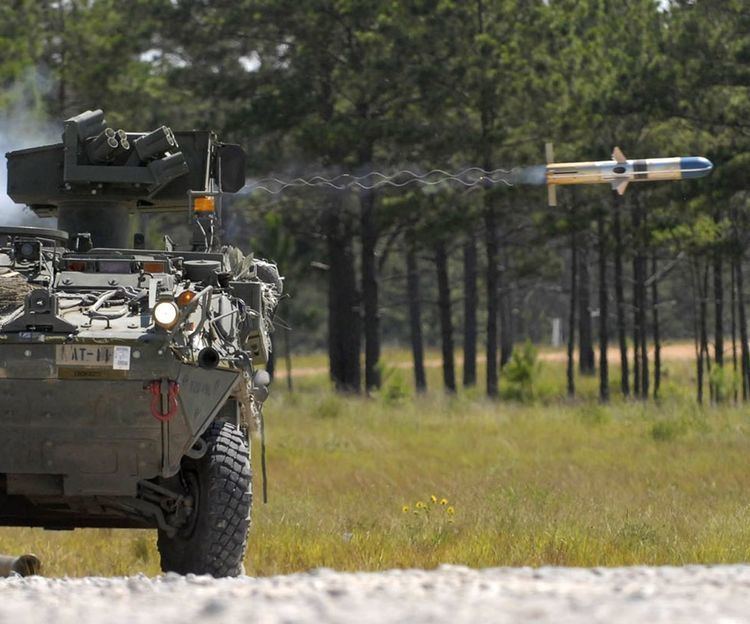 | ||
A wire-guided missile is a missile that is guided by signals sent to it via thin wires connected between the missile and its guidance mechanism, which is located somewhere near the launch site. As the missile flies, the wires are reeled out behind it (command guidance). This guidance system is most commonly used in anti-tank missiles, where its ability to be used in areas of limited line-of-sight make it useful, while the range limit imposed by the length of the wire is not a serious concern.
Contents
The longest range wire-guided missiles in current use are limited to about 4 km (2.5 mi).
History
Electrical wire guidance was first employed by the Germans during World War II. Most German guided missile projects used radio control, but as the British proved to be able to jam anything they used, rushed projects were started in 1944 in order to develop alternatives. The first system to be modified in this fashion was the Henschel Hs 293B anti-ship missile. Other examples included the X-4 air-to-air missile, and the X-7 anti-tank version of the X-4.
The X-7 influenced other military thinkers after the war. By the early 1950s a number of experimental systems had been developed (for example, Malkara missile), leading to their widespread deployment in the late 1950s and early 1960s. Large numbers of Israeli tanks were destroyed using wire guided AT-3 Sagger missiles during the Yom Kippur War of 1973. Wire guidance has remained the main system for most smaller weapons although newer systems such as laser beam riding have come into use in anti-aircraft and some anti-tank use roles (such as the US Hellfire missile and the Russian AT-14 Kornet).
Some torpedoes can be wire-guided, such as the U.S. Mk 48 Advanced Capability (ADCAP) torpedo, Russian UGST torpedo, or the Swedish Torped 613, which is guided by an insulated wire.
Timeline
This is a timeline of notable early wire-guided missiles.
